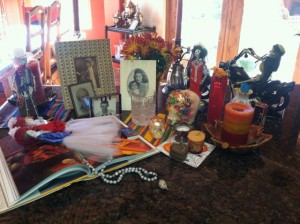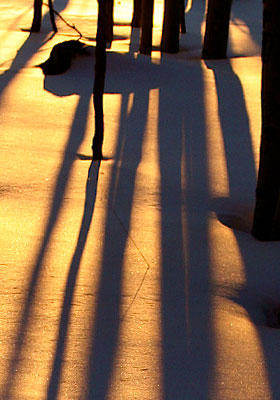First, a bit of history about Halloween, All Saints Day and All Souls Day.
This time of year was known as Samhain by the Celts, meaning “summer’s end,” and named for the lord of death who allowed souls who had died to return to earth on Nov. 1. Some who had been harmed during their lives returned as ghosts, witches, goblins and elves and haunted their living persecutors. Cats were considered sacred because they had been humans and were changed into cats as a punishment for misdeeds. To protect against these scary spirits, on the eve of Samhain, people put out their hearth fires and the Druids (priests) built a huge bonfire of sacred oak, offering sacrifices of crops, animals and some say even humans, telling fortunes of coming year by divining the ashes and remains. People wore costumes of animal heads and skins. They took fire from bonfire to light their hearths again.
Local traditions developed from there. The Irish held a parade, following a leader dressed in a robe with a mask head of an animal, and begged for food. And, they started the jack-o’lantern. Someone named Jack couldn’t enter heaven because he was a miser, and couldn’t enter hell because he had played practical jokes on the devil; so he had to walk the earth with his lantern until Judgment Day.
Later, after the Roman conquest of Britain in AD 43, an autumn festival honored Pomona, the goddess of fruits and trees, connecting the apple with the celebrations, which were combined with Samhain.Christianity brought in All Saints Day on Nov. 1, honoring those who had entered heaven. Some of the pagan celebrations for All Hallows Eve remained, and took new forms.
During the Middle Ages the belief arose that it was the souls in purgatory who appeared on All Souls Day as witches, toads, goblins, etc. to people who had wronged them. This began the custom of feeding, honoring and appeasing the spirits. In addition, celebrations for the Feast of All Souls began in the early days of the church, for those departed who were in purgatory, hoping for entry into heaven. These celebrations have evolved in Mexico where graves are decorated on the morning of All Souls, Nov. 2. In Louisiana, relatives whitewash and clean tombstones and decorate them with garlands, wreaths, crosses and flowers.
If one of these traditions is part of your custom, then you have your own meaning associated with this time of year when the veils between worlds is thin. If not, what can we make of all this?
Well, I see it as an opportunity to make friends with death. First, we can remember our loved ones who have passed by creating our own ceremonies: telling stories, making altars, visiting their graves, or just by lighting a candle. We’re not only honoring them, we’re bringing the seen and unseen worlds closer together—not just for the spirits, but for ourselves.
Death is such a taboo subject in our American culture. Other cultures have fun with this time of year, and take it seriously at the same time. In Mexico, lots of cooking and preparations are happening right now, to honor those who live on in our hearts. Humor, whimsy, music and creativity are all part of the recognition of the part death plays in all of our lives.
In Tibet, it’s customary to begin preparing in midlife for one’s death. In yoga, we end our asana practice with savasana, the “corpse pose,” where we let go and allow our thoughts and our illusions of control to “die.” When we sleep we let our day “die,” and hopefully our troubles too. We enter the land of the dark, closing our eyes to the seen world, and entering another world we only partly see in dreams.
In the morning, we don’t remember all of where we’ve been, just as we don’t consciously remember being in the spirit world while we’re on earth. Day and night, dark and light, life and death are the yin and yang of our reality.
In the shamanic tradition, we say that we don’t want death “stalking” us, which happens when we live in fear of it. So we make friends with it, knowing that we are, at our essence, eternal. Though we may have fears of dying, we live “beyond” our fear, because we know that our spirit will journey on when it leaves the body. This time of year is an opportunity to imagine that journey and to celebrate those who are on it.
May you find that the thinness of the veil brings you blessings this year.

